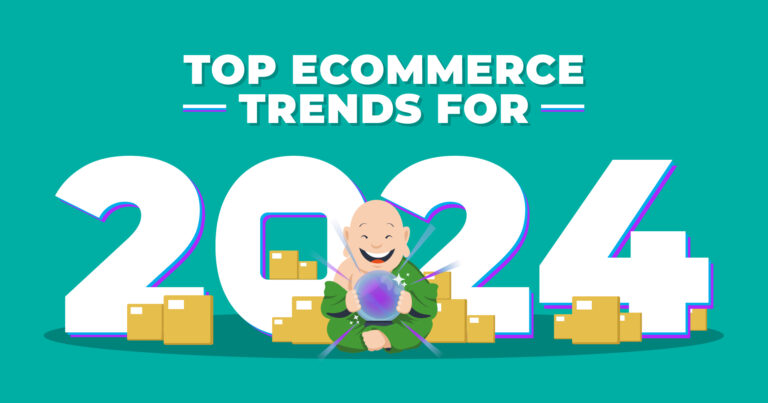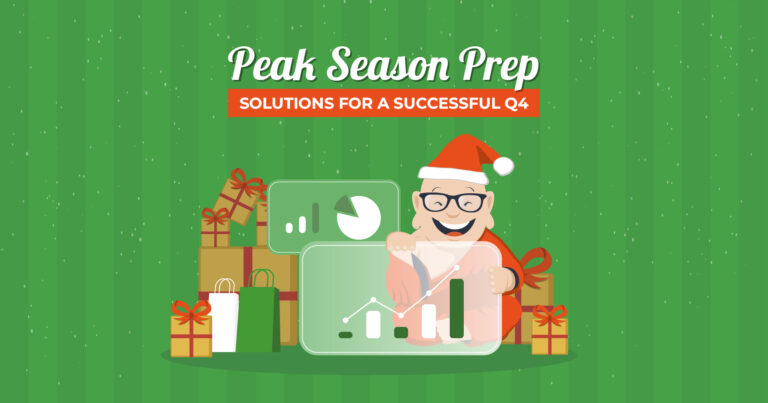Simple Steps to Improve Ecommerce Conversion Rates
It’s every business owner’s worst nightmare: You’ve created the perfect ecommerce store but, somehow, the sales are just not rolling in. You might feel like you’ve tried every trick in the book, but it’s important not to get frustrated or discouraged. Trust us, there is definitely a method to the madness, which is why we’re more than happy to be sharing some of our favorite tips and tricks with you.
Read on to learn about how you can take your store from zero to hero in no time flat!
1. Collect and Analyze Data
Knowledge is power. Know better, do better. You get the gist. Point is, not tracking your website metrics means you’ll be taking stabs in the dark and just hoping for the best. In order to get your conversion juices going, you’ll need to get serious about your data.
The answer? KPIs (Key Performance Indicators) are measurable values that indicate how well your company is meeting certain objectives. Below are a few examples:
- Number of website visits or sessions per month
- Unique site visitors per month
- Website bounce rate
- Average time on site
- Average page views per visit
- Most viewed webpages
- Referral sources
- Mobile site traffic
- Desktop site traffic
- Conversion rate
- Shopping cart abandonment rate
- New customer orders
- Returning customer orders
- Average order value (AOV)
- Customer acquisition cost (CAC)
- Customer lifetime value (CLV)
Sound overwhelming? No worries! You don’t have to track all of these at once. First, start by figuring out your baseline metrics, or the current state of your business. You might find that you’re lacking in some areas but doing great in others. Next, focus on your main objective. Is it brand awareness, lead generation, or something else? Take all of that into consideration as you make tweaks to your website, and be sure to always compare these changes to your baseline metrics so you know you’re on the right track.
2. Improve Ease of Purchase
Want more sales? Make it super easy for people to buy from you. This might seem like an obvious statement, which is perhaps why it’s so often overlooked. Set some time aside to browse your website as if you were looking at it for the first time. Here are some handy questions you can ask yourself along the way:
- Is the purpose of my store immediately clear?
- Are there any broken links or 401 pages?
- Are there any pop-ups? Are they distracting in any way?
- Are the product pages detailed and informative? (Be sure to check for spelling and grammar errors!)
- How easy was it to get to the checkout page?
- Can you easily create an account to save your billing and shipping information?
- What payment options are offered?
Of course, you’ve probably looked around your website hundreds of times, which is why it’s a good idea to combine your own experience with a fresh pair of eyes — the more pairs, the better!
3. Optimize for Mobile Use
Did you know that mobile browsing accounts for approximately half of web traffic worldwide? With that kind of info, you literally can’t afford to not have a functional, beautiful website for mobile users. Nowadays, most website builders, like Wix and WordPress, have templates that are already mobile-responsive, so you’ll have no problem designing your website for both desktop and mobile devices. Gotta love modern technology!
Not sure if your store is mobile-friendly? Simple! Pull it up on your phone and browse it like you would on your computer. While you’re at it, go back to step #2 and make sure it’s just as easy to purchase on your phone!
4. Use High-Quality Photography
First impressions matter. A professional website is one that is taken seriously by prospective shoppers, and photography plays a huge role in that. You’ve taken the time to create a product line, make sure it looks good! If your images are low-quality or poorly lit, it might be enough to deter shoppers with even the most minimal artistic sensibilities. If you want to take the DIY route, Shopify has an awesome article on product photography. But, if you prefer to hire a pro, there are many hopeful photographers ready to sweep you off your feet.
5. Show Social Proof
What is social proof? In simple terms, it’s a psychological phenomenon turned marketing tactic used to assuage prospective customers. The gist of it is that people are inclined to follow the mass opinion. So, if everyone loves your store, it’s a good bet that a prospective customer will think, “Hmm, well, if everyone loves XYZ Mittens, they must be the best mittens around, right?” Whether this thinking is flawed or not, it works.
One of the best ways to acquire social proof is through testimonials or reviews. If you’ve got ‘em, great! If not, ask your customers to show a little love. By following up with your customers, you’ll also be creating a stellar post-purchase experience, which sounds like a win-win to us. Additionally, it’s an opportunity to fix any issues buyers may have had with their orders and ensure a lasting, mutually beneficial relationship with your customers. Scratch that — win-win-win.
Of course, testimonials aren’t the only way to score big with customers. Endorsements, social media engagement, and press releases are just some of the strategies you can use to boost your social proof. If you want to delve into deeper waters, here’s some more inspiration.
6. Upgrade Your Security
The importance of upgrading your website’s security is twofold. First, savvy shoppers will rest assured knowing that protecting their information is of the utmost importance to you. A secure website also leads to higher Google rankings, which ultimately means more visibility for your ecommerce store!
The first step in securing your site is purchasing an SSL Certificate. This ensures that sensitive data that is shared across the internet reaches only the intended users and makes it unreadable to unintended users (like hackers). A SSL will also transform the beginning of your URL from HTTP to HTTPS so users easily know your site is secure. Make sure to keep that certificate active to maintain your status as a cybersecurity guru.
Another way to increase consumer trust is to display the right trust seals on your website. Think McAfee Secure, PayPal Verified, and VeriSign. These badges can provide a little something extra to guarantee your customers that your website is 100% safe.
7. Offer a Great Return Policy
Raise your hand if you like returns! No one? That’s what we thought. Unfortunately, returns are an inevitable part of ecommerce, especially if you work with a return-heavy industry like apparel. They say you catch more flies with honey than you do with vinegar, so we recommend embracing returns and crafting an understanding, flexible return policy. Think free return shipping, pre-printed return labels, and a longer return period overall.
If you need a little more convincing, know that 62% of consumers have said they are likely to buy again from stores offering free returns and exchanges. Giving your customers peace of mind will be worth its weight in gold.
8. Offer Fast & Free Shipping
Would this be a ShipMonk article if we didn’t talk about ecommerce fulfillment or shipping? Shipping can make or break a purchase, especially in an Amazon-dominated world where 2-day and next-day shipping is now the norm. In addition to fast shipping, customers are getting increasingly used to not paying for it all. The message is clear: In order to run with the big dogs, your shipping game has to be up to par with your competitors and the expectations of your customers.
Luckily, we’ve got you covered. Check out our shipping hacks here:
Ideally, you’ll want to offer both fast and free shipping. But, if that’s not an option for you, mix and match different methods to see what works best for you and your wallet.
Remember that optimization is a journey, not a final destination. You’ll have to make many tweaks and tests along the away, and, as soon as you perfect your technique, you’ll have to turn it upside down again as your business changes and grows. The key is to focus on small, incremental changes. A/B tests will become your best friend as you find just the right method for you. Ultimately, it comes down to trial and error, so don’t expect anything to be perfect!
Go get ‘em! May your journey be fruitful with high conversion rates and happy customers. And, as always, reach out if we can help with anything!



